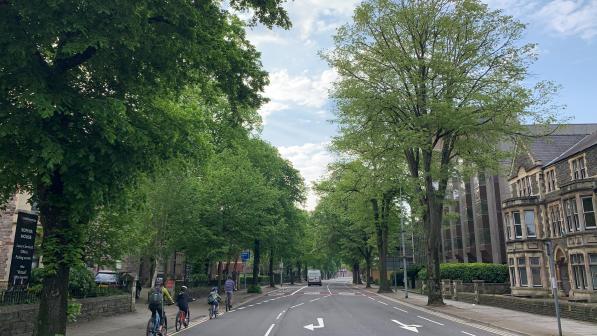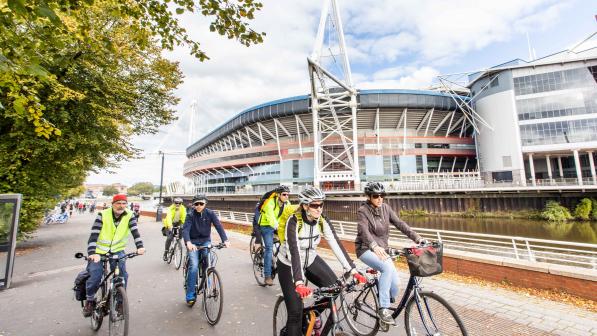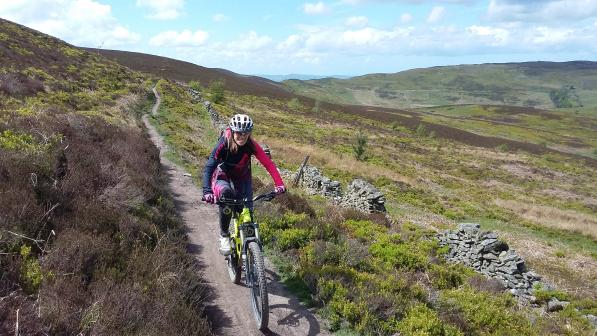Consultation Response to the Active Travel Act Guidance

For many of us in Wales the Active Travel Act is a source of both pride and frustration. It is ground-breaking legislation that promises a vision of active travel routes that would enable many more people to walk and cycle in their daily lives.
The Act came into force in 2013 and, according to Cycing UK's policy director, Roger Geffen, “has in so many ways set the gold standard for how cycling could be, with its structure of network planning, high design standards and continuous improvement."
On the ground, things are progressing rather more slowly than many of us would have liked, in part because there has been insufficient funding made available but also because of a lack awareness of the requirements of the Act and an understanding of how to apply them in practice
While we are not yet at the level of funding that is needed to allow us to achieve the levels of active travel that are urgently needed, we are moving in the right direction. Last year the Deputy Minister for the Economy and Transport, Lee Waters, made more funds available than ever before for walking and cycling, and we will continue to campaign for sufficient money to be made available. The current crisis has also seen bids invited for temporary infrastructure with a message that where these interventions work they should be made permanent.
Alongside these urgent interventions, Welsh government is continuing to take steps to ensure that the Active Travel Act can be used to achieve its aims. A review of the guidance that accompanies the Act has recently taken place and a consultation on the changes has just closed.
Roger Geffen, with input from some of our highly experienced volunteers, submitted a comprehensive response to the consultation which we hope will contribute to making the document more accessible and a more powerful tool.
Key messages from our response are the need to clearly state the aim of ‘active travel’, and therefore the definition within the guidance must clearly state that we are looking at halting and reversing the growth of motor traffic.
There is also an urgent need for professional training to spread awareness of its requirements and understanding of how to apply them in practice.
Our full consultation response can be found in the PDF in this article, and Roger’s key points are below:
The Welsh Government hopes to finalise the guidance later this summer, so that Welsh Councils can then use it to inform the preparation of their next Active Travel Network Maps, due to be completed next year. Cycling UK and its local volunteers in Wales stand ready to help ensure that those maps reflect the changes to the active network that will get many more people cycling.
Key points from our consultation response on the Active Travel Act Guidance
- The Active Travel Guidance document is long (450 pages),and needs a summary for councillors and senior decision-makers. That summary should include a concise statement of the key principles of planning routes and other facilities for cycling and walking.
- The definition of ‘active travel’ needs to clarify its crucial role in supporting the wider aim of reducing road traffic, and its reciprocal relationship with that aim. Providing for active travel will often involve reallocating road space, however the resulting increases in walking and cycling then mean that the pressures on road space are reduced. Wider traffic reduction measures (such as road pricing,or restricting or charging for car parking) also play a role in supporting active travel.
- The guidance needs to explain the steps involved in planning coherent cycling and walking networks (as distinct from disconnected individual schemes).
- The technical part of the guidance needs to be clearer and more prescriptive about design standards, setting a high bar in most situations (with exceptions being genuinely ‘exceptional’), but also defining safety-critical thresholds to prevent dangerous facilities from ever being built.
- It should spell out how pedestrian and cycle planning should be integrated into wider policies and plans. These include:
- Development planning policies (to make sure new housing and other developments always have cycle and pedestrian-friendly streets, junctions and other specific facilities such as cycle parking);
- Planned highway maintenance programmes – when roads are being resurfaced, opportunities should always be considered to make them more pedestrian and cycle-friendly at the same time; and
- Rights of way improvement plans. Although active travel funding should be focused on routes used for ‘day-to-day’ travel, rights of way often meet this need (as well as supporting recreational walking and cycling), particularly in ‘urban fringe’ areas.
- The launch of the guidance will need to be accompanied by professional training (particularly given the size of the document), to spread awareness of its requirements and understanding of how to apply them in practice.
It will need to be kept up to date with developments in best practice and the UK government’s forthcoming revision of the Highway Code; Cycling UK hopes (and expects) that the Highway Code review will bring about changes to the rules governing pedestrian and cycle priority at junctions and crossing points. This in turn will make it possible (or much easier) to start using continental-style junction designs that are difficult or impossible to introduce under current UK rules.


